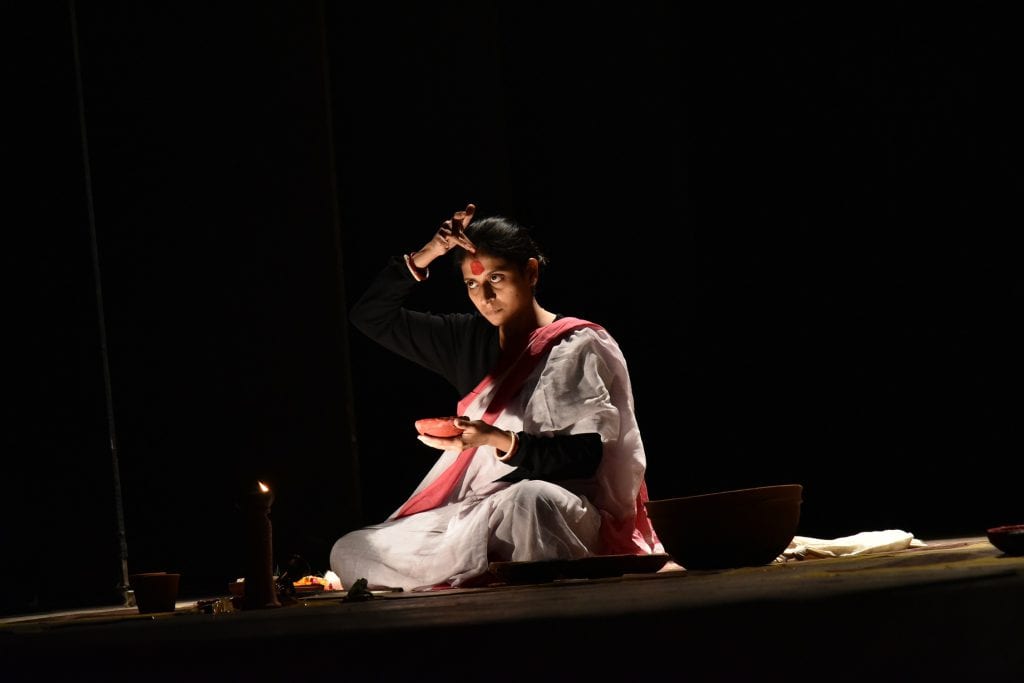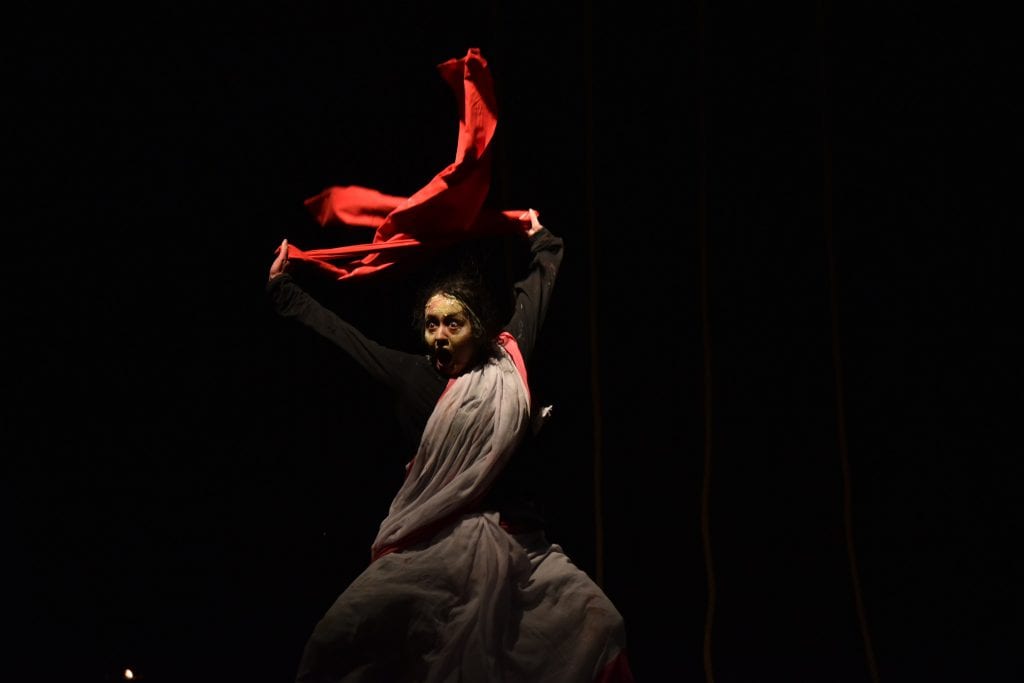For this performance, the Szekspirowski took yet another shape, as an amphitheatre was created for the audience in the space that is usually upstage and backstage, while the actors performed on what usually forms the downstage area.
In the scenario envisaged by the Kalyani Kalamandalam (India), the story of Macbeth is not represented in traditional fashion. Instead, the significances are embodied by the three Weird Sisters, who recite their own lines, but then also take turns in incarnating the other characters. It is not clear whether this is foresight or memory on their part, but what is obvious is that what happens is ordained by fate and that the witches are its repository. This is supported by the only element of setting – the four hanging ropes in the background that the women interlock, thus reminding the spectator of the three Norns – the Norse mythological creatures that correspond to the Greek Parcae and Roman Fates. The Old English noun wyrd (modern day weird) means destiny.
The greatly condensed Shakespearean text is wrapped in Hindu symbolism, and the programme informs us that the incantations and rituals of the dark aspect of the Tantric cult stand for the pervasive evil embodied in the play. The only existing Bengali translation is faithful both to the poetry and metric structure of Shakespeare’s original, and in harmony with the Sanskrit incantations used in the production.
Movement, gesture, chant, facial expression are all in the Hindu tradition. The connecting thread is the mantra “OM” – one of the most important spiritual symbols referring to the soul, as well as the entirety of the universe, truth, the cosmic principles, and knowledge. Various gods of the Hinduist pantheon are invoked: the gods of destruction – Kālī (destroyer of evil forces, bestower of liberation) and Mahākāla (her spouse, whose name means beyond time/death and who, like her, can dissolve time, space and the universe). Kala Bhairava (the supreme ruler of time) is also invoked, and, of course, Shiva – the Supreme Being, destroyer of evil and the transformer of the universe, whose third eye is the mystical and esoteric symbol of clairvoyeance, thus making the connection with the witches. The prayer to Shiva is that he should liberate us/them from the Fear of Death through the realisation that we are never separated from our Immoral Nature – a direct connection with Macbeth and his incessant fears.
If at the beginning the saree-dressed witches put their hair up in buns and draw Shiva’s sign on their foreheads, then they strip down to the neutral black T-shirts and trousers of universal evil. The saree is also used as the parchment of Macbeth’s letter to his wife, and later – in the final confrontation scene – as sword. The same dye that is used for Shiva’s third eye is also used for Duncan’s blood. Thus, connections are constantly made between the two cultures.
Once Macduff reveals that he has been from his mother’s womb untimely ripp’d, everything stops suddenly, there is a blackout and complete silence. When the light comes back on, the Weird Sisters are back centre stage by the ropes, as at the beginning. Thus, the play ends symmetrically and we are left with a sense of fate and clairvoyance.
The short, intense performance is interpreted masterfully by three extremely talented actresses, among which Monalisa Chatterjee shines in her main part. The actresses’ versatility of facial and vocal expression is impressive. Their artistic prowess is supported by a clever musical accompaniment, in which the dramatic scenes are enhanced by drums and the lyrical ones by guitar, and the most “bewitching” blend is in the “Bubble, bubble, toil and trouble” scene.
The performance is enriching and moving. It demonstrates that Shakespeare is ours and we are Shakespeare’s, wherever we might have been born. A thing of beauty…



